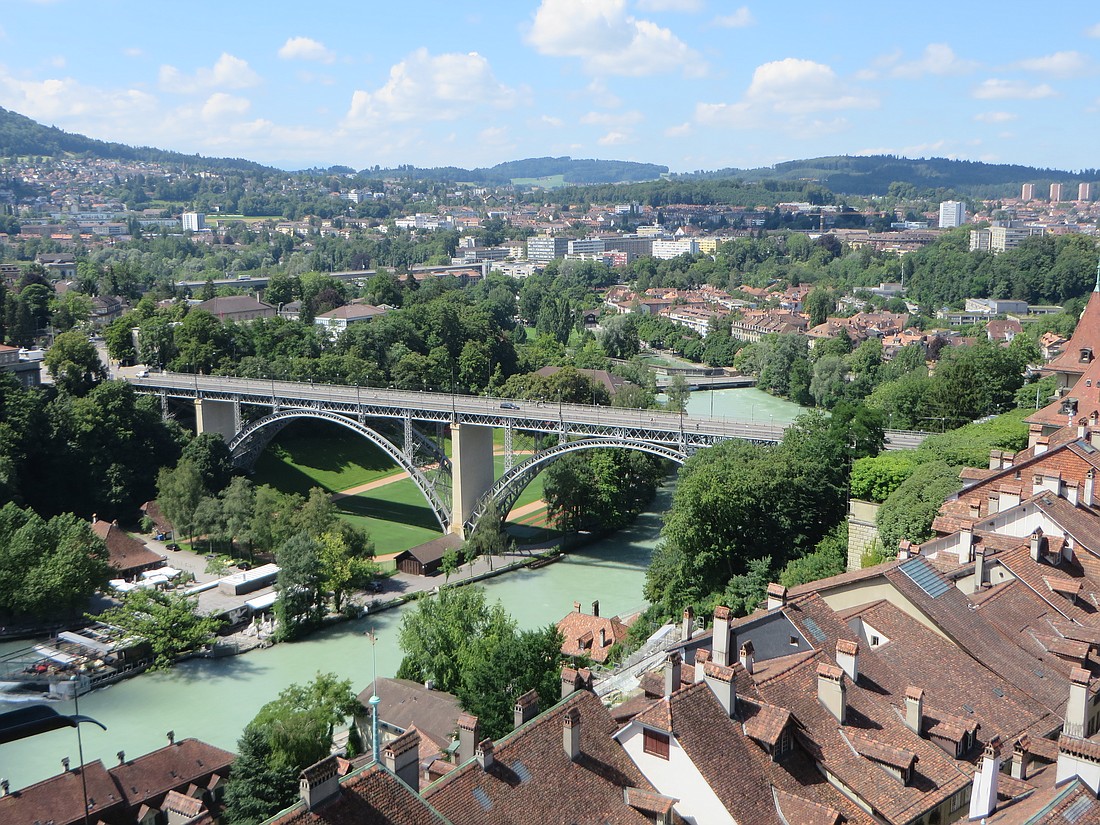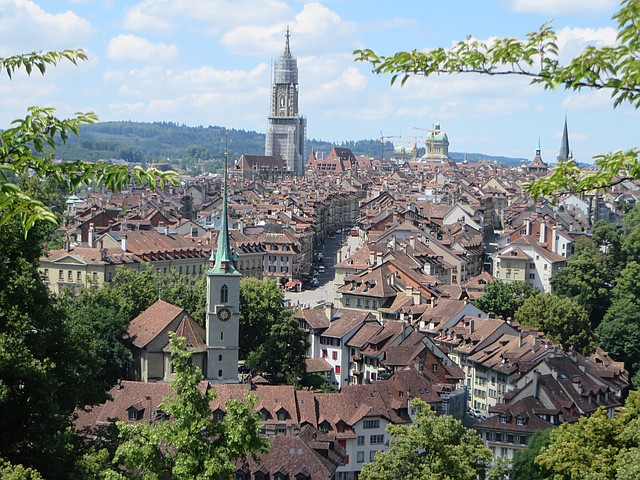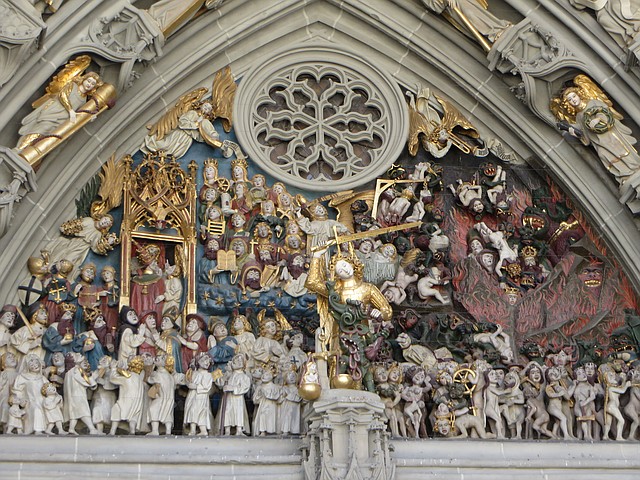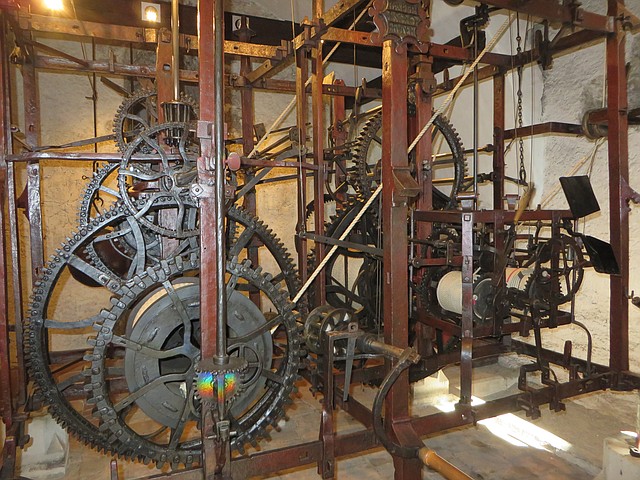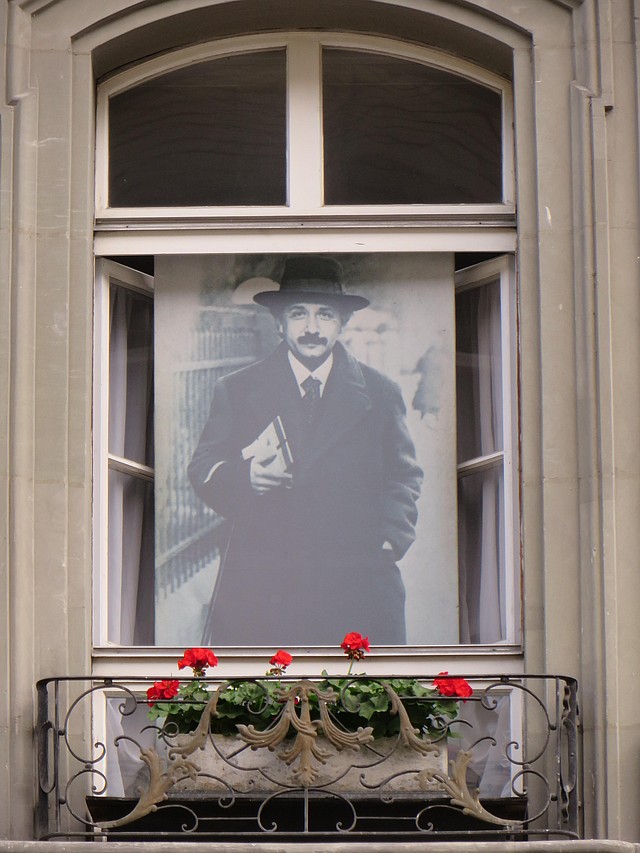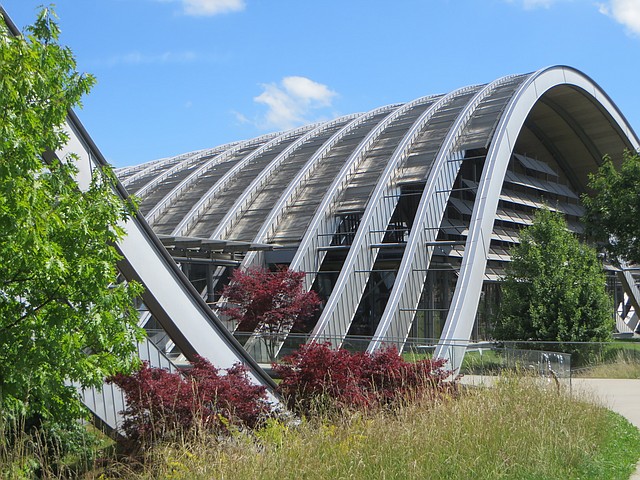Bern is a city of superlatives
September 22, 2014 at 6:00 a.m.
If there were a beauty pageant for European capitals, Bern would get the crown. This well-known Swiss city oozes with cosmopolitan charm, history and culture, and consistently gets high marks from visitors. They extol its accessibility, unique attractions and impressive Alpine views, as well as its ample shopping and dining options.
Founded in 1191, Bern was built on a peninsula which offered natural protection on three sides. According to legend, it was named after the first animal that Duke Berchtold V. von Zähringen caught – a bear – while he was hunting during the construction of the city. As the town’s heraldic animal, the bear is found everywhere you look. There are bears on flags and statues, frolicking around as fountain figures and in clockwork shows, and their image is often replicated in gingerbread and chocolate confections, as well as in other souvenir items. And of course, real bears make their home in the famed BearPark along the banks of the scenic Aare River.
A fire in 1405 caused major damage to the city and most of it burnt to the ground. It was subsequently rebuilt in the Gothic style using local sandstone as the primary material. In 1848, Bern was elected the capital of Switzerland by the first united parliament, and then in 1983, the city’s Old Town was designated a UNESCO’s World Heritage Site. Today, with its covered promenades, towers, Renaissance fountains, and churches dating back to the Middle Ages, Bern is considered a gem of medieval architecture.
Rising high over the city is Münster Cathedral, Switzerland’s largest ecclesiastical building and the dominant structure in Bern’s Old Town. Of special note is the basilica with its three naves and the portal containing 234 colored depictions of the Last Judgment. To reach the ideal vantage point of this masterpiece, you’ll need to climb 344 steps up to the 328-foot tall spire. The reward is well-worth the exertion, as there, surrounded by picturesque rooftops, you can enjoy magnificent city and snow-capped mountain views. Down below in front of the Cathedral is the colorful and bustling Münster-Terrasse, a square where people have been gathering and meeting for centuries.
You’ll also want to check out the Parliament Building and Parliament Square, as well as the Town Hall, a late-Gothic building which is the political center of the city and the canton or district of Bern. The Clock Tower, however, is a must-see on every visitor’s list. It’s a landmark medieval structure that has served the city over the years as a guard tower, prison, clock tower, center of urban life and civic memorial. Though it has gone through many redecorations and renovations in its 800 year-existence, the Clock Tower remains one of Bern’s most recognizable symbols. It’s an ornate astronomical timepiece with moving figures that pop out before the hour and perform an entertaining ritual much to the delight of those in observance. If you are interested in learning about the clock’s internal mechanisms, guided tours in the tower are available, which allow you to view the clockwork figures step for step all the way to the famous third crow of the rooster. Then, head up the spiral staircase to the observation platform for another priceless view of Old Town.
Among its many accolades, Bern is known as the City of Fountains. Over 100 fountains, some that still feature the original statues with their allegorical figures, dot the city. Several stand in the middle of heavily-trafficked streets, presenting drivers of cars and trams with an obstacle course to navigate. These colorful pillars enliven the town while representing memorials to its heroes and historic events.
The city also boasts a thriving cultural scene. With its many museums, galleries and theaters, Bern is a mecca for arts aficionados. The Museum of Fine Arts, for example, features eight centuries of art in Bern with over 3,000 paintings and sculptures. Over at the Bern Historical Museum, the past comes alive in interactive displays with highlights from the fields of history, prehistory, early history and ethnography. Objects on display range from the Stone Age to the present. The integrated Einstein Museum, a permanent exhibit, is dedicated to the life and work of Albert Einstein, who lived in Bern in the early 1900s and did his initial work on the revolutionary Special Theory of Relativity. Elaborately staged original pieces, animation, film documentaries, writings and more help illustrate the pioneering theories of this genius in an entertaining and accessible manner. To round out your Einstein experience, visit the physicist’s original apartment in Old Town where he resided with his wife Mileva and son Hans Albert. The second floor residence features period furnishings, as well as photos and narrative texts.
Bern is the home to the Zentrum Paul Klee, a uniquely designed museum that contains the most important collection of works by the world-renowned, 20th century Classic Modernist artist. The art is a treasure in and of itself and the building it is housed within is an architectural marvel. Designed by the famed architect Renzo Piano, the structure reflects the characteristics of the hilly countryside around it with its wave-like roof construction, while the gentle sweep of the building follows the slight curve of the nearby highway. Each of the three “waves” in this “landscape sculpture” accommodates a specific function of the museum. One area contains the art exhibitions, while the others serve as concert and conference halls and a children’s museum.
Kids will also particularly enjoy the Natural History Museum with its 150-year-old collection of skeletons, its lifelike dioramas, and display cases full of local and exotic mammals and birds. The most popular exhibit, however, is about Barry, the famed St. Bernard rescue dog who died in 1814. Barry was credited with saving over forty lives in his twelve-year career while patrolling the St. Bernard Pass, a particularly dangerous stretch of the Alps.
Another of Bern’s claims to fame is its shopping district. The city has four miles of covered historic arcades that front baroque buildings in Old Town. It’s the longest covered shopping promenade in Europe, selling everything from stylish clothing and jewelry to tech gadgets and second-hand goods. The advantage is being able to stroll outside along the walkways without worrying about the weather. And when you’ve shopped till you’ve dropped, rest assured there are plenty of options when it comes to sustenance from casual cafes to upscale restaurants. After all, this is the cradle of Toblerone chocolate and the city that gave the world Emmental cheese.
For a memorable gourmet dining experience with a to-die-for view, try the Bel Etage Restaurant atop Gurten, Bern’s local peak. Riding the panoramic funicular up the mountain is half the fun. More casual, but with an equally stunning setting, is Restaurant Rosengarten where you’ll be surrounded by hundreds of flowers and feel as if you’re in the middle of a Monet painting. And as you munch on traditional dishes and Mediterranean creations, take in the breath-taking view of Old Town and the serpentine Aare River.
It’s clear when it comes to superlatives, Bern reigns supreme. Of all the accolades, however, it’s the warmth of the Bernese people that tops the list. Their hospitality is legendary, ensuring that visitors feel comfortable and welcome during their stay. You may arrive a stranger, but you will leave as a friend.
For Bern tourism information: www.bern.com
Deborah Stone is a travel and lifestyle writer, who explores the globe in search of unique destinations and experiences to share with her readers. She’s an avid adventurer who welcomes new opportunities to increase awareness and enthusiasm for travel and cross-cultural connections. Her stories appear in a number of publications as well as on various travel websites. Additionally, she can be frequently be heard dishing travel with the hosts of the NPR-affiliated and AARP produced talk radio show, “2 Boomer Babes.” Deborah is a longtime Seattle area resident, who currently resides in Santa Fe, New Mexico.
